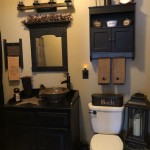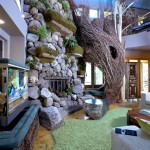Marble Bathroom Decor Ideas: Elevating Your Space with Timeless Elegance
Marble, a metamorphic rock prized for its veined patterns and natural beauty, has long been associated with luxury and sophistication. Its application in bathroom design offers a unique opportunity to create a space that is both functional and aesthetically pleasing. This article explores various marble bathroom decor ideas, highlighting different approaches to incorporating this exquisite material into your home.
The versatility of marble allows for its use in a multitude of ways within a bathroom. From large-scale applications like flooring and wall cladding to smaller, more decorative elements, marble can significantly enhance the ambiance and value of a bathroom. Careful consideration of the type of marble, its finish, and the overall design scheme is crucial to achieving a cohesive and visually appealing result.
Understanding Different Types of Marble for Bathroom Design
Choosing the right type of marble is paramount to the success of any bathroom renovation or design project. Marble varies significantly in color, veining patterns, porosity, and durability. Understanding these differences allows for informed decisions that align with both aesthetic preferences and practical considerations.
Carrara marble, sourced from Italy, is characterized by its white or bluish-gray background with subtle, delicate veining. Its elegant and understated appearance makes it a popular choice for bathrooms, creating a bright and airy atmosphere. Carrara marble is also relatively affordable compared to other types of marble, making it a practical option for those seeking a luxurious look without breaking the bank. However, Carrara is somewhat porous and needs to be properly sealed and maintained to prevent staining.
Calacatta marble is perhaps the most sought-after and expensive variety. It is distinguished by its striking white background and bold, dramatic veining in gray, gold, or brown tones. Calacatta marble exudes opulence and is often used as a statement piece in bathroom designs, such as a feature wall or a countertop. Its premium price reflects its rarity and distinctive aesthetic. Careful planning is essential to maximize the visual impact of Calacatta marble due to its strong patterns.
Statuary marble shares similarities with Calacatta, boasting a bright white background and bold veining. However, the veining in Statuary marble tends to be more defined and less dispersed than in Calacatta. It is another high-end option that adds a touch of grandeur to any bathroom. Its strong visual presence makes it suitable for creating focal points and adding a sense of drama to the space.
Emperador marble, originating from Spain, is known for its rich brown or dark brown coloration with irregular veining in lighter shades. Its warm and earthy tones create a sense of comfort and sophistication. Emperador marble is a versatile choice that can be used in both traditional and contemporary bathroom designs. Its darker hue can help to create a more intimate and cozy atmosphere.
Crema Marfil marble, another popular choice from Spain, features a creamy beige background with subtle veining. Its neutral color palette makes it a versatile option that complements a wide range of design styles. Crema Marfil marble is often used for flooring, walls, and countertops, creating a seamless and elegant look.
Incorporating Marble in Different Bathroom Elements
Marble can be incorporated into numerous elements within a bathroom, each offering a unique opportunity to enhance the overall design. The application of marble extends beyond merely functional surfaces, allowing for creative expressions that define the space's character.
Marble flooring is a classic and enduring choice. Its natural beauty and durability make it an ideal surface for bathrooms. Large-format marble tiles can create a sense of spaciousness, while smaller tiles allow for intricate patterns and designs. The veining patterns in marble flooring add depth and visual interest, transforming a simple floor into a work of art. Radiant heating can be installed beneath marble flooring to provide warmth and comfort, especially during colder months. Proper sealing is crucial to protect marble flooring from water damage and staining.
Marble walls create a luxurious and spa-like atmosphere. Full marble cladding provides a seamless and elegant look, while accent walls with marble inserts can add a touch of sophistication. The veining patterns in marble walls can create a stunning visual impact, serving as a focal point in the bathroom. Consider using book-matched marble slabs to create a symmetrical and balanced design. When installing marble walls, ensure proper waterproofing to prevent moisture damage.
Marble countertops add a touch of elegance to vanities and sinks. The smooth surface of marble is both beautiful and practical, providing a durable and easy-to-clean workspace. Choose a marble countertop that complements the overall color scheme of the bathroom. Consider incorporating an undermount sink to create a seamless transition between the countertop and the sink basin. Sealing the marble countertop is essential to protect it from stains and scratches.
Marble accents, such as soap dishes, toothbrush holders, and trays, can add subtle touches of luxury to a bathroom. These small details can elevate the overall design and create a cohesive look. Consider using marble mosaic tiles to create decorative borders or patterns. Incorporate marble shelving to display toiletries and accessories in an elegant and organized manner. Marble accents can also be used to highlight architectural features, such as niches or window sills.
Marble bathtubs are the epitome of luxury and indulgence. A freestanding marble bathtub can become a stunning focal point in the bathroom, creating a spa-like retreat. Marble bathtubs offer excellent heat retention, allowing for longer and more relaxing baths. Due to their weight, proper structural support is essential when installing a marble bathtub. Consider incorporating a marble surround to complement the bathtub and create a cohesive design.
Design Considerations for Marble Bathrooms
Designing a marble bathroom requires careful consideration of various factors, including lighting, color palettes, and design styles. Achieving a harmonious balance between these elements is crucial to creating a bathroom that is both visually appealing and functional.
Lighting plays a critical role in showcasing the beauty of marble. Natural light is ideal, as it highlights the veining patterns and natural variations in the stone. Supplement natural light with artificial lighting, such as recessed lighting, pendant lights, and sconces. Consider using warm-toned lighting to create a cozy and inviting atmosphere. Install dimmers to adjust the lighting levels according to your preference. Ensure that the lighting is evenly distributed throughout the bathroom to avoid shadows and dark spots.
Color palettes should complement the marble's natural tones. Neutral colors, such as white, gray, beige, and cream, are classic choices that create a timeless and elegant look. These colors allow the marble to take center stage, highlighting its natural beauty. Introduce pops of color with accessories, such as towels, rugs, and artwork. Consider using metallic accents, such as gold, silver, or bronze, to add a touch of glamour. Avoid using overly bright or distracting colors that clash with the marble's natural tones.
Design styles can range from traditional to contemporary, depending on personal preferences. A traditional marble bathroom typically features ornate details, such as carved moldings, claw-foot bathtubs, and antique fixtures. A contemporary marble bathroom, on the other hand, embraces clean lines, minimalist designs, and modern fixtures. Transitional design combines elements of both traditional and contemporary styles, creating a balanced and sophisticated look. Choose a design style that reflects your personal taste and complements the overall aesthetic of your home.
Maintaining the beauty of marble requires regular cleaning and sealing. Marble is a porous material and susceptible to staining and etching if not properly cared for. Clean marble surfaces regularly with a mild soap and water solution. Avoid using harsh chemicals or abrasive cleaners, as they can damage the marble. Seal marble surfaces regularly to protect them from water damage and staining. Apply a stone sealant specifically designed for marble, following the manufacturer's instructions. Wipe up spills immediately to prevent staining. Use coasters and placemats to protect marble countertops from scratches and stains.
Budget considerations are also important when planning a marble bathroom renovation. Marble is a premium material, and the cost can vary significantly depending on the type, size, and installation requirements. Obtain multiple quotes from different contractors to compare prices and services. Consider using marble sparingly, such as on a feature wall or a countertop, to reduce costs. Explore alternative materials that mimic the look of marble, such as porcelain or ceramic tiles with marble patterns. Prioritize essential elements, such as flooring and walls, and save on less critical items, such as accessories. Plan the budget carefully and allocate funds accordingly to avoid overspending.

27 Stunning Marble Bathroom Ideas Tile

37 Marble Bathroom Design Ideas To Inspire You Interior God

The Marble Bathroom A Unique Home Décor Material Inspiration Ideas Brabbu Design Forces
10 Show Stopping Marble Bathroom Ideas Floor Decor Blog

Marble Bathroom Inspiration The Showroom

27 Exquisite Marble Bathroom Design Ideas

10 Marble Bathroom Ideas For Your Home

Marble Bathroom Design Ideas

18 Marble Bathroom Ideas For A Modern And Luxurious Style Coco Lapine Designcoco Design

Modern Bathroom Designs Featuring Marble Livinghouselivinghouse
Related Posts







